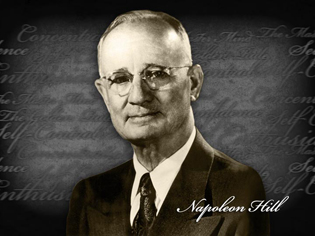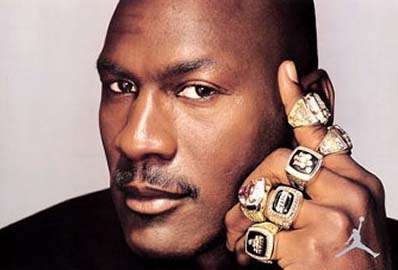Believe and Achieve: The Unstoppable Power of Thought
“Whatever the mind of man can conceive and believe, it can achieve.”
- Napoleon Hill
We have all heard the following expressions, “Play until the final whistle blows”, “As long as there is time on the clock, we haven’t lost”, “Play all 27 outs”, “Play all 60 minutes”, “It’s not over until it’s over”, etc. Most people misconstrue these statements as relating to time, they do not. All relate to the fact that no matter how badly you are losing, you only lose once you have accepted the loss in your mind. If you never quit, then you never lose. Once you quit, it is over, all the talent and ability in the world is not enough to overcome that. Quitting is a choice that you make in your MIND. Achievement is no different. It is in your mind that you achieve your goals before you achieve them in reality. Everyone who has ever won any major Championship has pictured themselves winning it before it actually occurred. That all sounds nice, but what does it have to do with you? What does it have to do with you getting into great shape, getting more muscle, getting stronger? EVERYTHING!!!
Last week, I was doing heavy squats and on the first set I was struggling. It started creeping into my mind that maybe the weight was too heavy and I should take a little off or maybe I should do fewer reps. As a survival mechanism, your body is always trying to protect you so, it is natural to think about backing off when you are about to accomplish a very heavy lift. You have to fight through that natural instinct in order to succeed. As I stood there resting between sets, I said to myself, “WTF are you doing, you can lift this weight, explode out of the bottom, YOU’VE GOT THIS!!!” Then, I closed my eyes and pictured myself doing the squat successfully. The next set with the same weight felt EASY!!! Not only that, but 3 sets later, on my last set, I did 40 LBS heavier than I did the first set!!! Was I stronger than I was during the first set? Did I take some magic supplement? NO and NO!!! I used mental imagery or visualization and self-talk to propel my success.
Let’s do a simple exercise on mental imagery…however you direct your mind is what you are going to think about, positive or negative and whatever you say, you will think about. Try this: DO NOT THINK ABOUT PINK ELEPHANTS!!! I bet you just had a picture of a pink elephant in your mind, LOL!!! So, our mind will think about whatever we feed it. Hence, if you want to be successful, think of success. If you want to be in great shape, have 6 pack abs or be a MASSIVE FREAK then, think about that image and it will drive you towards achieving that goal. As the great Earl Nightingale said in The Strangest Secret, “We become what we think about.” The mind always moves you toward your current dominant thought. Research shows that self-talk and visualization works.
Self-talk refers to statements individuals address to themselves for specific purposes, such as increasing motivation or enhancing skill execution (1). Tod et al. (2) found that “…healthy, active individuals may enhance the display of muscular power via the use of instructional and motivational self-talk… self-talk may lead to an increase in muscular power by alterations in movement kinematics. The use of self-talk may contribute to improved performance in sports requiring power-based skills.” Hatzigeorgiadis et al. (3) found that motivational self-talk led to improved distance in the water polo throw. Self-talk is promoted as a way to enhance sport and exercise performance (4). As you can see, giving yourself verbal cues, whether instructional or motivational, does correlate to success.
Research proves that mental imagery is an effective tool as well. Silbernagel et al. (5) found “Athletes who used imagery more often were more confident. There was also a positive relationship between imagery use and imagery effectiveness and confidence in the weight room. Thus, it seems as though imagery is a source of confidence in the weight room, just as it is a source of confidence in sports and other domains.” Woolfolk et al. (6) used positive and negative imagery with the task of putting a golf ball and the results were significant. “In the positive imagery group, subjects imagined the ball going into the cup, while subjects using negative imagery visualized the ball narrowly missing the cup. Subjects in the control group putted without instructions. On each of 6 consecutive days a 10-putt trial was conducted for each subject. Post hoc analyses showed significant differences among all groups, with positive imagery producing the most improvement, the control condition producing less, and negative imagery resulting in performance deterioration.” Some of the most successful athletes and some of the most memorable performances have been the result of using positive mental imagery.
Arnold Schwarzenegger – 7-time Mr. Olympia
Arnold’s entire Bodybuilding career was the result of his use of mental imagery. He imagined moving to America and becoming a Champion Bodybuilder ever since he was a little boy. A great example of Arnold’s use of mental imagery was with his biceps, one of his most impressive physical attributes. He said, “I was constantly playing tricks on my mind. This is why I began to think of my biceps as mountains, instead of flesh and blood. Thinking of my biceps as mountains made my arms grow faster and bigger than if I’d seen them only as muscles. When you think of biceps as merely muscles, you subconsciously have a limit in your mind, which for biceps is something in the area of 20″ or 21″. When you limit yourself to that measurement, it is very hard to get to that level and, needless to say, impossible to get past it. But when you think about mountains, there is no limit to biceps growth, and therefore you have a chance of going beyond normal mental barriers.” Arnold went on to say, “Whether it’s muscle or money, you have to make it with your mind.” That is such an incredibly powerful and true statement!!!
Billy Mills – 1964 Gold Medalist 10,000 meter run
View this video to see one of the most improbable victories in Olympic history:
Billy Mills was the first American to ever win Gold in the 10,000 meter run and no American has won the event since. The favorite in the 1964 Olympics for the 10,000 meter run was Ron Clarke of Australia who held the World Record. Mills’ time in the preliminaries was a full minute slower than Clarke. Mills, a believer in visualization or “imagery,” did not permit a negative thought to enter his head as he worked toward the biggest race of his life. Mills said, “The subconscious mind cannot tell the difference between reality or imagination.” He elaborated, “You focus for 4 years, dozens of times a day, visualizing, reliving the moment the way you want it to be and then you win. That one fleeting moment, you know, you’re the very best in the world.” What an incredible story, visualizing his victory day in day out for four years and when given the one opportunity to run the biggest race of his life, he achieved in reality what he had envisioned in his mind hundreds of times before.
Jack Nicklaus – won a record 18 career major championships on the PGA Tour
Jack Nicklaus, “The Golden Bear”, is the most prolific golfer in PGA history amassing an incredible 18 major championships over the span of 24 years. It is no surprise that one of the greatest golfers ever used the power of mental imagery to forge his success. In his words, “I never hit a shot even in practice without having a sharp in-focus picture of it in my head. It’s like a color movie. First, I “see” the ball where I want it to finish, nice and white and sitting up high on the bright green grass. Then the scene quickly changes, and I “see” the ball going there: its path, trajectory, and shape, even its behavior on landing. Then there’s a sort of fade-out, and the next scene shows me making the kind of swing that will turn the previous images into reality only at the end of this short private Hollywood spectacular do I select a club and step up to the ball.” What an incredible of vivid use of mental imagery!!!
Michael Jordan – 6-time NBA Champion & One of the Greatest Basketball Players Ever
Growing up, I had the privilege of seeing Michael Jordan play. I say privilege because he was one of a few players who could single-handedly take over an entire game. He had the ability to overcome double teams with ease and still score 50 or 60 plus points. When asked about athletic skills versus mental skills, Michael Jordan said, “The mental part is the hardest part, and I think that’s the part that separates the good players from the great players.” In terms of mental imagery, Jordan said, “I visualized where I wanted to be, what kind of player I wanted to become. I knew exactly where I wanted to go, and I focused on getting there.” Yet another legend who used mental imagery!!!
As we saw above, mental imagery or visualization is a technique employed by some of the most successful athletes of all time. While we may not have the same physical gifts that they had, any of us can employ the technique of visualization to achieve tremendous success in our physique, business and in life. As with anything in life, visualization takes practice and what works for one person may not work for another so, find out what works for you and go with it. You can call upon these images of success whenever you need them and the more you use mental imagery, the more confident and successful you will become. Focus your mental images on achieving success rather than avoiding failure, only focus on positive thoughts and close your eyes and repeat a message to yourself until the image becomes very vivid and clear. See yourself achieving your goals, getting the physique you desire and living the life that you deserve. Do this continuously and one day, you won’t need to close your eyes anymore because those dreams will become a reality!!!
Did you enjoy this post? Buy me a cup of coffee ![]()
References:
1) Hardy, J. Speaking clearly: a critical review of the self-talk literature. Psychol Sport Exerc 7: 81–97, 2006.
2) Tod, DA, Thatcher, R, McGuigan, M, and Thatcher, J. Effects of instructional and motivational self-talk on the vertical jump. J Strength Cond Res 23(1): 196–202, 2009
3) Hatzigeorgiadis, A, Theodorakis, Y, and Zourbanos, N. Self-talk in the swimming pool: the effects of self-talk on thought content and performance on water-polo tasks. J Appl Sport Psychol 16: 138–150, 2004.
4) Zinsser, N, Bunker, L, and Williams, JM. Cognitive techniques for building confidence and enhancing performance. In: Applied Sport Psychology: Personal Growth to Peak Performance. J.M. Williams, ed. Boston: McGraw-Hill, 2006. pp. 349–381
5) Silbernagel, M.S., S.E. Short, and L.C. Ross-Stewart. Athletes’ use of exercise imagery during weight training. J. Strength Cond. Res. 21(4):1077–1081. 2007
6) Robert L. Woolfolk, Mark W. Parrish and Shane M. Murphy. The effects of positive and negative imagery on motor skill performance. Cognitive Therapy and Research . Volume 9, Number 3, 1985, pgs. 335-341










[...] I received really great feedback and one person even told me that my presentation was the only reason they came!!! I touched on using mental imagery and harnessing the power of the mind in one of my previous posts: Believe and Achieve: The Unstoppable Power of Thought. [...]